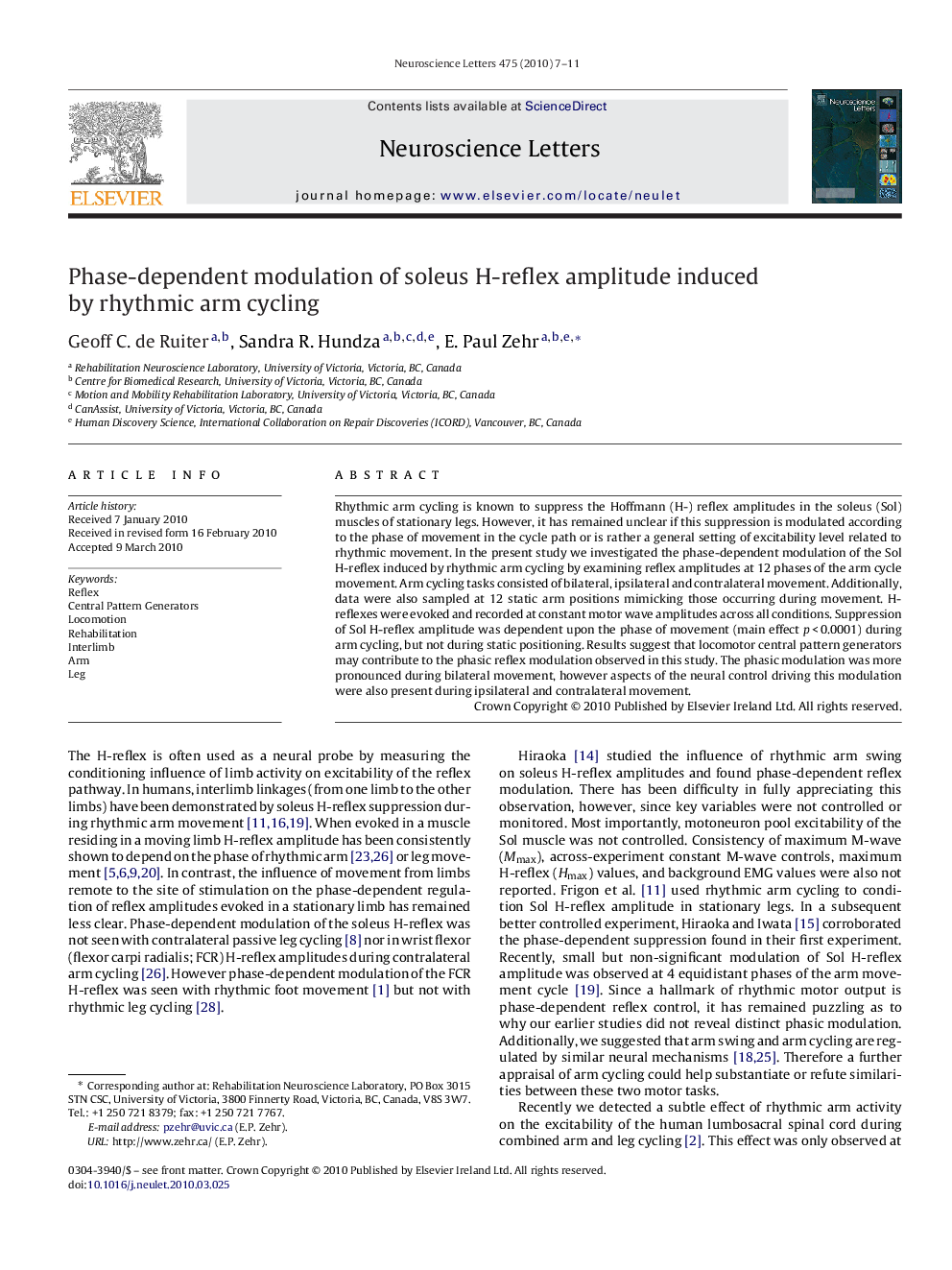| Article ID | Journal | Published Year | Pages | File Type |
|---|---|---|---|---|
| 4346294 | Neuroscience Letters | 2010 | 5 Pages |
Rhythmic arm cycling is known to suppress the Hoffmann (H-) reflex amplitudes in the soleus (Sol) muscles of stationary legs. However, it has remained unclear if this suppression is modulated according to the phase of movement in the cycle path or is rather a general setting of excitability level related to rhythmic movement. In the present study we investigated the phase-dependent modulation of the Sol H-reflex induced by rhythmic arm cycling by examining reflex amplitudes at 12 phases of the arm cycle movement. Arm cycling tasks consisted of bilateral, ipsilateral and contralateral movement. Additionally, data were also sampled at 12 static arm positions mimicking those occurring during movement. H-reflexes were evoked and recorded at constant motor wave amplitudes across all conditions. Suppression of Sol H-reflex amplitude was dependent upon the phase of movement (main effect p < 0.0001) during arm cycling, but not during static positioning. Results suggest that locomotor central pattern generators may contribute to the phasic reflex modulation observed in this study. The phasic modulation was more pronounced during bilateral movement, however aspects of the neural control driving this modulation were also present during ipsilateral and contralateral movement.
